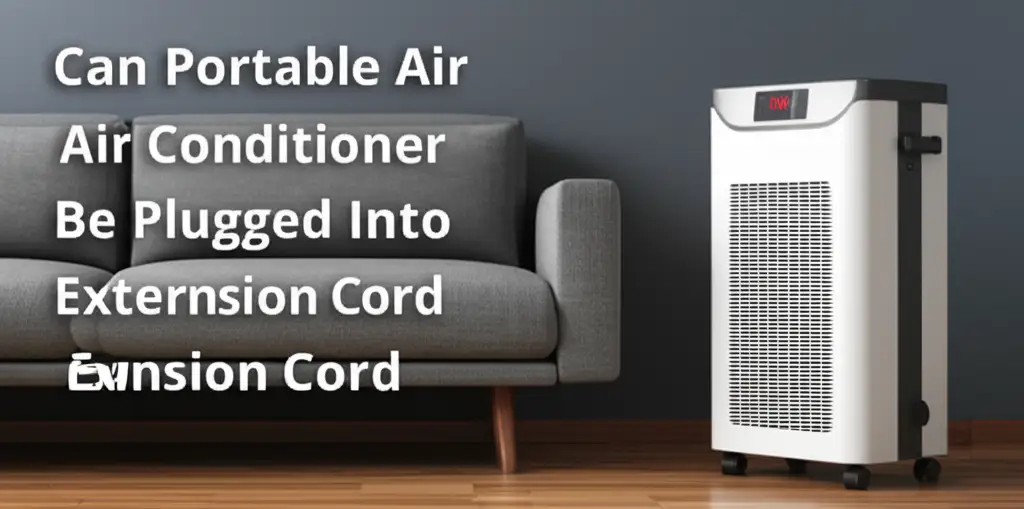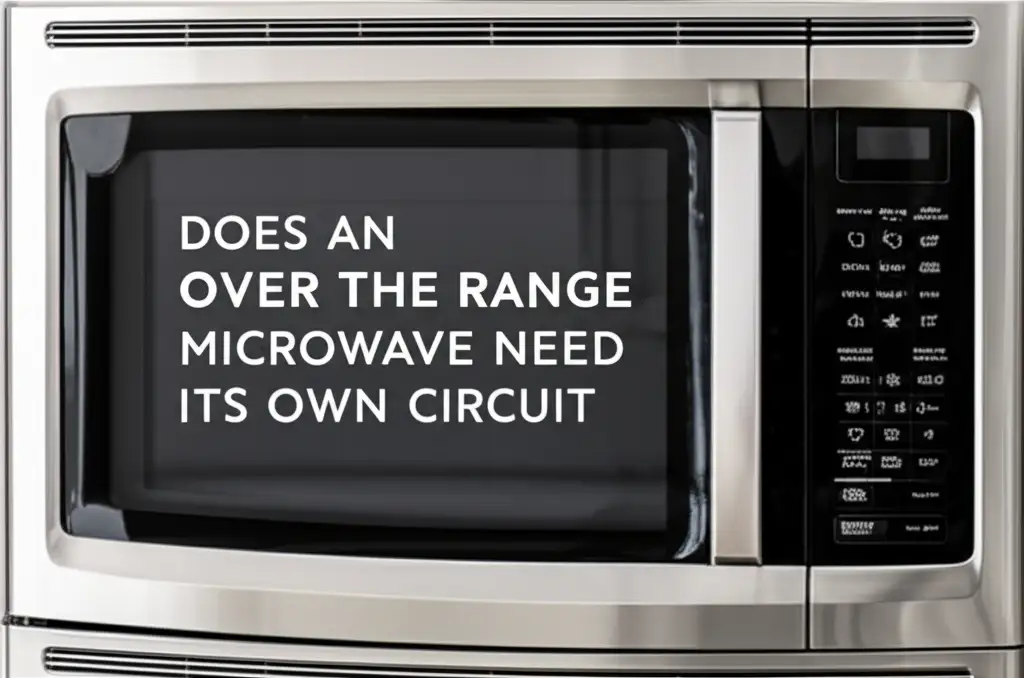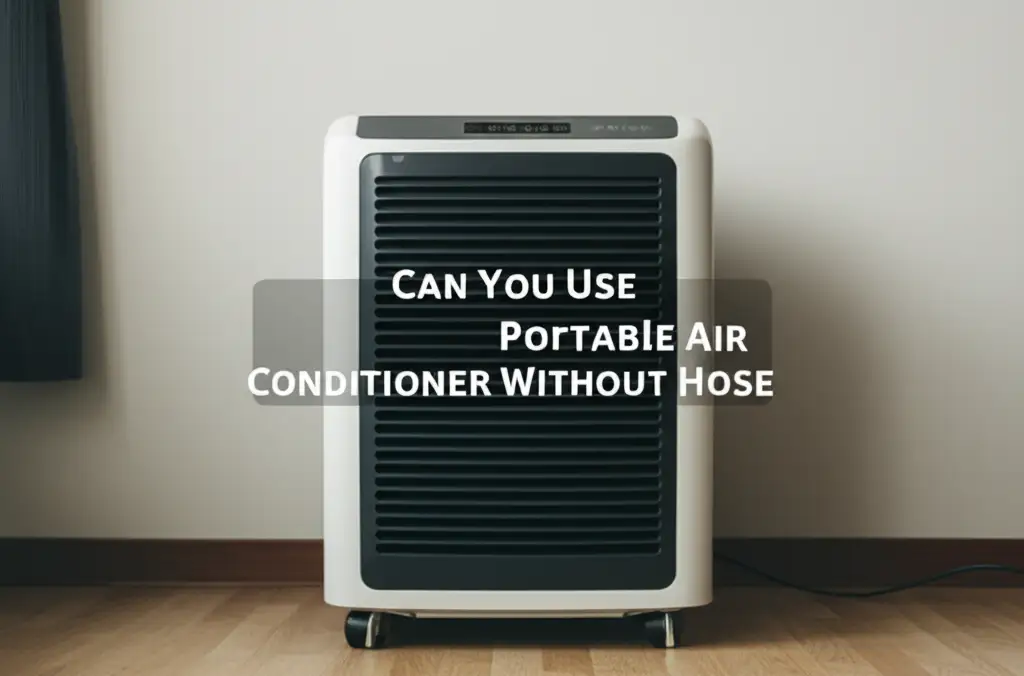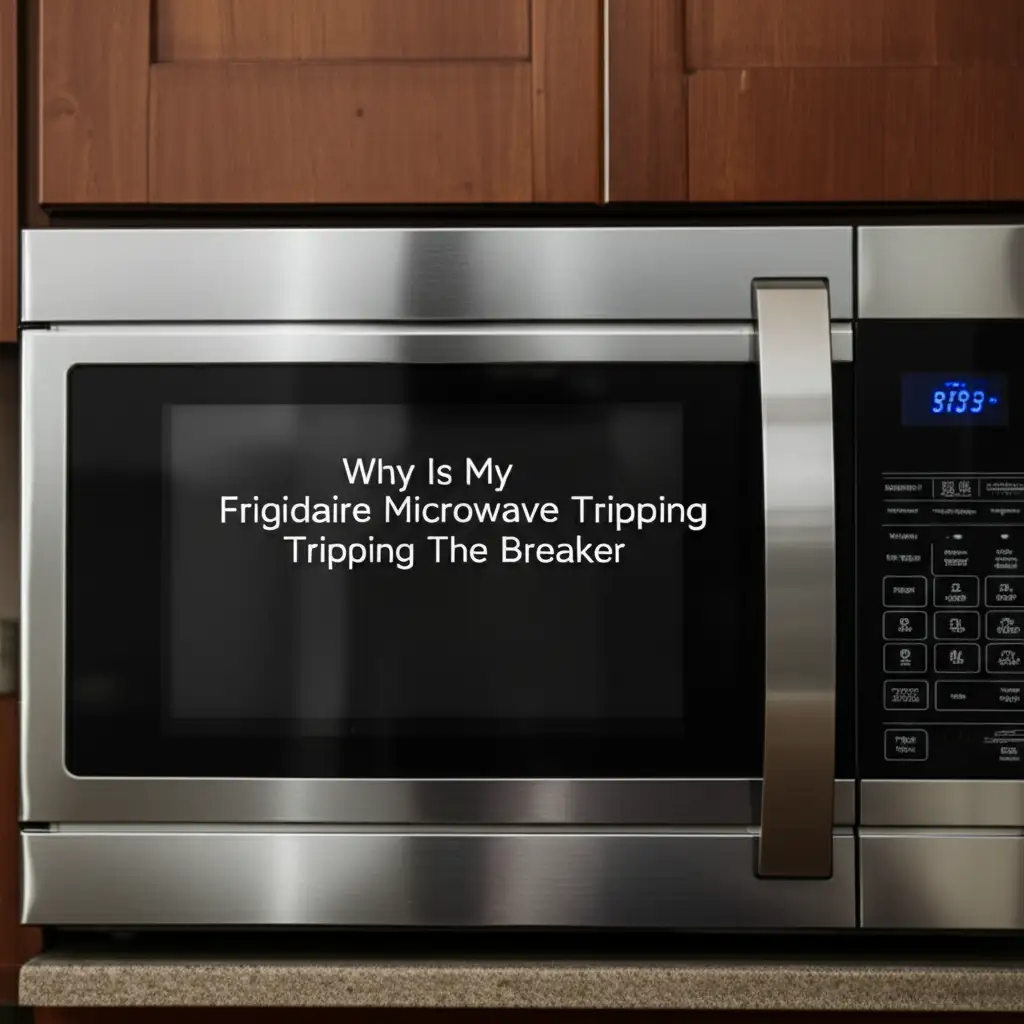· Todd Martin · Electrical Safety · 18 min read
Can Portable Air Conditioner Be Plugged Into Extension Cord

Can Portable Air Conditioner Be Plugged Into Extension Cord?
Summer heat often arrives fast. A portable air conditioner can provide quick relief. You might think about plugging it into an extension cord. This seems like an easy solution for placement. Many people ask if a portable air conditioner can be plugged into an extension cord. This question is not as simple as a yes or no answer.
Portable AC units draw a lot of power. Using the wrong extension cord can create serious dangers. These dangers include overheating, electrical fires, and damage to your appliance. This article will explain the risks. We will also cover how to choose the correct extension cord. We will discuss safety measures. You will learn to power your portable AC safely.
Takeaway
- Avoid using extension cords with portable AC units whenever possible.
- If an extension cord is necessary, use only a heavy-duty, short, and correctly rated cord.
- Match the cord’s amperage rating to or exceed the AC unit’s power requirements.
- Never use lightweight cords, power strips, or surge protectors with portable ACs.
- Always inspect cords for damage and ensure proper ventilation to prevent overheating.
A portable air conditioner can be plugged into an extension cord, but only under very specific and strict conditions. You must use a heavy-duty extension cord with the correct gauge and length, specifically rated for the high power draw of an AC unit, to prevent electrical hazards and ensure safe operation.
Understanding Portable AC Power Needs
Portable air conditioners are powerful appliances. They need a lot of electricity to operate. This is because they contain a compressor and a fan. These parts work hard to cool a room. Understanding their power needs is important. It helps you avoid electrical problems.
Most portable AC units require a dedicated circuit. This means they should plug directly into a wall outlet. They typically draw between 8 to 15 amps. Some larger units might draw even more. This current draw is high compared to many other household devices. A standard wall outlet provides 15 or 20 amps. If the AC shares an outlet with other appliances, it can overload the circuit.
High power draw means more heat. The electrical wiring generates heat as electricity flows through it. Thicker wires can handle more current with less heat buildup. This is why appliance cords are thick. An extension cord must also be thick enough. If it is too thin, it will overheat. This overheating is a major fire risk. It can also damage your portable AC unit.
Always check your portable AC’s power label. It will list the voltage, amperage, and wattage. Use these numbers to choose the right power source. Never guess when it comes to electrical safety. I always advise checking the appliance’s specifications first. This small step can prevent big problems.
The Dangers of Improper Extension Cord Use
Plugging a portable air conditioner into the wrong extension cord can be very dangerous. Many people do not realize the risks. These risks include overheating, electrical fires, and damage to your home and appliance. I have seen situations where people thought they were safe, but they were not.
One major danger is overheating. Portable AC units draw a high, continuous current. A thin extension cord cannot handle this load. The cord’s wires become hot. The insulation can melt. This exposes live wires. It creates a serious fire hazard. The cord can even ignite.
Another risk is voltage drop. When a cord is too long or too thin, the voltage reaching the AC unit drops. This makes the AC work harder. It tries to draw more current to compensate. This extra strain can damage the compressor. It shortens the lifespan of your appliance. Your AC might not cool effectively either.
Electrical fires are a real possibility. Overloaded circuits or damaged cords can spark. These sparks can ignite nearby flammable materials. This includes curtains, carpets, or furniture. A fire can spread rapidly. It poses a threat to life and property. You must prioritize safety above all else.
Tripped circuit breakers are a sign of trouble. If your circuit breaker frequently trips when the AC is running, it means the circuit is overloaded. This often happens when an AC is sharing a circuit or using an inadequate extension cord. While a tripped breaker prevents a fire, it shows a dangerous setup. You should investigate the cause immediately. Repeated tripping can also damage the breaker over time. Understanding why your portable air conditioner keeps tripping the breaker is crucial. Similarly, if you notice your portable air conditioner keeps blowing fuses, it’s a clear warning sign of an electrical issue.
Choosing the Right Extension Cord for Your Portable AC
Selecting the correct extension cord is critical for safety. You cannot just use any cord you have. Portable AC units need specific types of cords. Paying attention to details saves you from potential hazards. I always advise carefully matching the cord to the appliance’s needs.
Wire Gauge (AWG)
The wire gauge is important. It refers to the thickness of the wires inside the cord. A lower AWG number means a thicker wire. Thicker wires can carry more current safely. For portable air conditioners, you generally need a 12-gauge (12 AWG) or even 10-gauge (10 AWG) extension cord. Never use a 14-gauge or 16-gauge cord for an AC unit. These are too thin and will overheat. The cord packaging will clearly state the AWG. Always check this number before buying.
Cord Length
Length also matters. Shorter cords are better. They have less resistance. This reduces voltage drop and heat buildup. Use the shortest possible cord for your needs. A cord longer than 25 feet is generally not recommended for portable AC units. Each extra foot of wire adds resistance. This increases the risk of problems. Try to place your AC unit closer to a wall outlet if possible.
Amperage Rating
Every extension cord has an amperage rating. This tells you the maximum current it can safely carry. This rating must be equal to or greater than your portable AC’s amperage draw. For example, if your AC draws 12 amps, use a cord rated for 15 amps or more. This provides a safety margin. Never use a cord with a lower amperage rating. This is a common mistake that leads to overheating.
Indoor vs. Outdoor Rating
Extension cords come with indoor or outdoor ratings. Outdoor cords are more durable. They resist moisture, UV light, and temperature changes. Even if you use your AC indoors, an outdoor-rated cord might be a safer choice due to its robustness. It offers better insulation and stronger sheathing. Look for cords marked “W” (weather-resistant) or “SJOW” for outdoor use.
Types of Cords to Avoid
Never use light-duty cords. These are for lamps or small electronics. They are too thin for an AC. Do not use power strips or surge protectors with portable AC units. These devices are not designed for the continuous high load of an AC. They can overheat and fail. They might even catch fire. Plug the AC directly into the wall, or into a suitable heavy-duty extension cord. Avoid using an extension cord under a rug; while this might be tempting for aesthetic reasons, learning how to safely run an extension cord under a rug typically applies to lower-power devices, not high-draw appliances like ACs.
Assessing Your Home’s Electrical System
Before plugging in any high-power appliance, it’s wise to understand your home’s electrical system. This knowledge helps prevent overloads and ensures safety. You need to know if your outlets can handle the load. I always recommend caution when dealing with household electricity.
Outlet Capacity
Standard wall outlets in homes are usually 15-amp or 20-amp outlets. They are connected to circuits. A single 15-amp circuit can safely power items up to about 1800 watts. A 20-amp circuit can handle around 2400 watts. Most portable AC units fall within this range, often requiring 1000-1500 watts. The key is what else is on that circuit. If other devices are drawing power from the same circuit, adding a portable AC can cause an overload.
Dedicated Circuits
The safest option for a portable AC is a dedicated circuit. A dedicated circuit means only one appliance is connected to that circuit breaker. This prevents other devices from sharing the load. It ensures the AC receives stable power. It also reduces the risk of tripping breakers. If you frequently trip a breaker when running your AC, you likely do not have a dedicated circuit for it. Consider having an electrician install one. This is a worthwhile investment for safety and performance.
Circuit Breakers
Your home’s electrical panel contains circuit breakers. Each breaker protects a specific circuit. If a circuit becomes overloaded, the breaker “trips” or switches off. This cuts power to prevent overheating and fire. It is a safety feature. If a breaker trips often, it signals an issue. It is not just an inconvenience. It means the circuit cannot handle the load. Never try to bypass a tripping breaker. This is extremely dangerous. It indicates a need to reduce the load or find a different outlet.
Identifying Shared Circuits
It is not always obvious which outlets are on the same circuit. You can test this. Plug a lamp into the outlet you plan to use for your AC. Then, go to your electrical panel. Flip breakers off one by one until the lamp goes out. Note which breaker controls that outlet. Then, check other outlets in the room. If they also lose power, they are on the same circuit. This helps you avoid overloading. Avoid plugging other high-draw items into that circuit when the AC is running.
Safe Practices When Using Extension Cords with Portable ACs
Even with the correct extension cord, specific safe practices are necessary. Following these guidelines reduces risks. They help ensure your portable AC runs efficiently and safely. I always tell people that vigilance is key when using high-power appliances with cords.
Avoid Daisy-Chaining
Never connect multiple extension cords together. This is called “daisy-chaining.” It significantly increases resistance. It causes voltage drop. It also creates multiple points of failure. The connections can loosen. This generates heat and sparks. Daisy-chaining is a major fire hazard. Use one single, heavy-duty extension cord if you must use one. Ensure it is the correct length.
Inspect the Cord Regularly
Before each use, check the extension cord. Look for any signs of damage. This includes frayed wires, cracks in the insulation, or bent prongs. If you see any damage, do not use the cord. Replace it immediately. A damaged cord can expose live wires. This is a severe shock or fire risk. Cords can get damaged from being stepped on, pinched, or exposed to the elements.
Proper Placement and Ventilation
Place the extension cord in a location where it will not be a tripping hazard. Do not run it under rugs or carpets. This hides potential damage. It also prevents heat from dissipating. The cord can overheat silently. If you need to run a cord where people walk, use a cord protector. Ensure the cord has good air circulation around it. Do not bundle it tightly. Avoid placing heavy furniture on top of the cord. This can crush the wires and damage insulation.
Monitor for Overheating Signs
Stay alert for signs of overheating. Touch the extension cord occasionally while the AC is running. If it feels warm or hot, unplug the AC immediately. This means the cord is not sufficient for the load. Other signs include a burning smell or discolored outlets. If you notice these, get professional help. Do not continue using the setup. Your safety is paramount.
Disconnect When Not in Use
When you are not using your portable AC, unplug it. Disconnect the extension cord from both the AC and the wall outlet. This prevents any accidental power draw. It also minimizes the risk of electrical issues when the appliance is not supervised. This is a simple step that adds an extra layer of safety.
Alternatives to Extension Cords for Portable ACs
While carefully selected extension cords can work in a pinch, avoiding them entirely is the safest approach. There are often better solutions to get power to your portable AC. These alternatives minimize electrical risks and offer greater peace of mind. I always encourage finding a permanent, safer power solution for any high-draw appliance.
Repositioning the AC Unit
The simplest solution is to move the portable AC closer to a suitable wall outlet. This might mean rearranging furniture or the room’s layout. It could also mean placing the AC in a different room that has a conveniently located outlet. This eliminates the need for an extension cord altogether. It is the most direct and safest way to power your unit. Sometimes, a small change in placement makes a big difference.
Using Existing Outlets Wisely
Identify all available outlets in the area. Determine if any are on dedicated circuits. As discussed earlier, a dedicated 15-amp or 20-amp circuit is ideal. If you have multiple outlets in a room, check if they are on different circuits. You might find one that is not heavily loaded. This allows your AC to run without competing for power. This reduces the risk of overloading and tripping breakers.
Professional Electrical Installation
For a permanent and worry-free solution, consider hiring a licensed electrician. They can install a new, dedicated outlet specifically for your portable air conditioner. This ensures the AC has its own circuit and the wiring is up to code. It is an investment in your home’s safety and convenience. An electrician can also assess your home’s overall electrical capacity. This professional service provides the highest level of safety. It removes all doubt about cord suitability.
Consider a Different Cooling Solution
If you consistently struggle with power outlets, a portable AC might not be the best fit for your space. Explore other cooling options. Window air conditioners might fit in a different window with an accessible outlet. Ceiling fans or evaporative coolers are lower-power alternatives. These options might not cool as much as a portable AC but require less power. They might be safer if your electrical system cannot support a portable AC.
Troubleshooting Common Power Issues with Portable ACs
Even with careful planning, you might encounter power issues with your portable AC. Understanding common problems and how to troubleshoot them can save you frustration. It also helps you identify when professional help is needed. I’ve heard many stories about ACs not working right, and often it comes down to power.
Portable AC Keeps Tripping the Breaker
This is a very common problem. If your portable AC frequently trips the circuit breaker, it means the circuit is overloaded. The AC unit is drawing more current than the circuit can safely provide.
Possible Causes:
- Too many devices on one circuit: Other appliances, lights, or electronics might be sharing the circuit with your AC.
- Inadequate extension cord: The extension cord might be too thin or too long, causing voltage drop and increased current draw at the AC unit, or simply overheating itself.
- Faulty AC unit: Less common, but the AC unit itself might have an internal electrical fault.
Solutions:
- Move the AC to a different outlet on a separate circuit.
- Unplug other devices from the same circuit.
- Ensure you are using a heavy-duty, short extension cord (12 AWG or 10 AWG).
- If the problem persists, have an electrician check the circuit or the AC unit. For more detailed information on this specific issue, refer to our guide on why your portable air conditioner keeps tripping the breaker.
Portable AC Keeps Blowing Fuses
Some older homes still use fuses instead of circuit breakers. Fuses work similarly to breakers but need replacement after they “blow.” If your portable AC is blowing fuses, it indicates an overload.
Possible Causes:
- Overloaded circuit: Same as tripping breakers, too many devices or an inadequate fuse rating.
- Wrong fuse size: Someone might have installed a fuse with too low an amperage rating for the circuit.
- Short circuit in AC: A severe fault in the AC unit itself.
Solutions:
- Identify and remove other devices from the circuit.
- Ensure the fuse installed is the correct amperage for the circuit (check your electrical panel diagram).
- Use a suitable, heavy-duty extension cord if necessary.
- If fuses continue to blow even with the correct setup, consult an electrician. You can also read more about why your portable air conditioner keeps blowing fuses.
Portable AC Not Turning On
If your AC won’t turn on at all, check the power source first.
Possible Causes:
- No power to the outlet: The breaker might be tripped, or a fuse blown.
- Loose connection: The plug might not be fully inserted into the outlet or extension cord.
- Damaged cord: The AC’s power cord or the extension cord might be damaged.
- AC unit malfunction: Internal components like the power supply or control board could be faulty.
Solutions:
- Check your circuit breaker panel or fuse box. Reset the breaker or replace the fuse.
- Ensure all connections are snug.
- Inspect both the AC’s power cord and any extension cord for damage. Replace damaged cords.
- If the outlet has power and cords are good, the issue is likely with the AC unit itself. Consult the user manual for troubleshooting or contact customer support.
Portable AC Works Intermittently
An AC that turns on and off by itself could have several causes, some power-related.
Possible Causes:
- Overheating: The AC unit or the extension cord might be overheating, causing internal safety mechanisms to shut off the unit.
- Voltage fluctuations: Unstable power supply can cause the unit to cycle.
- Full water tank: Many portable ACs turn off when the water tank is full to prevent overflow. (This is a common, non-electrical issue.)
- Thermostat issue: The thermostat might be faulty or set too high.
Solutions:
- Ensure proper ventilation for the AC and the extension cord.
- Check the extension cord for proper gauge and length.
- Empty the water tank regularly. Sometimes, my portable air conditioner keeps filling up with water quickly, which causes it to turn off. Also, learn why your portable air conditioner turns off by itself.
- If voltage issues are suspected, contact an electrician.
Always prioritize safety. If you are unsure about an electrical issue, do not hesitate to call a qualified electrician.
Frequently Asked Questions
Is it safe to plug a portable AC into a power strip?
No, it is generally not safe to plug a portable AC into a power strip or surge protector. These devices are not designed to handle the high, continuous power draw of an air conditioner. Doing so can overload the power strip, cause it to overheat, and potentially lead to electrical fires or damage to your AC unit. Always plug your portable AC directly into a wall outlet or a heavy-duty extension cord specifically rated for the appliance.
What gauge extension cord do I need for a portable AC?
For most portable air conditioners, you will need a heavy-duty 12-gauge (12 AWG) extension cord. If your AC unit is particularly powerful or the cord needs to be slightly longer (though keep it as short as possible), a 10-gauge (10 AWG) cord offers even more safety margin. Never use thinner cords like 14-gauge or 16-gauge, as they cannot safely carry the required current and will overheat.
Can a portable AC damage an electrical outlet?
Yes, a portable AC can damage an electrical outlet if the outlet is old, faulty, or not rated for the AC’s power draw, or if an improper extension cord is used. Overloading an outlet can cause it to overheat, leading to discoloration, a burning smell, or even melting. This can create a fire hazard and necessitate outlet replacement. Always ensure the outlet is in good condition and can handle the AC’s load.
How long can an extension cord be for a portable AC?
Keep the extension cord as short as possible for a portable AC. A cord longer than 25 feet is generally not recommended. Shorter cords reduce voltage drop and heat buildup, ensuring the AC receives adequate power and preventing overheating of the cord itself. Excessive length increases resistance and electrical risks. Always prioritize the shortest, heavy-duty cord available that meets your needs.
What are the signs of an overloaded extension cord?
Signs of an overloaded extension cord include the cord feeling warm or hot to the touch, a burning plastic smell, visible melting or discoloration of the cord or outlet, and tripped circuit breakers or blown fuses. You might also notice the portable AC unit not cooling effectively or cycling on and off. If you observe any of these signs, immediately unplug the AC unit and inspect the cord for damage.
Can I use a regular indoor extension cord outside for a portable AC?
No, you should never use a regular indoor extension cord outside, especially for a high-power appliance like a portable AC. Indoor cords lack the necessary insulation and durability to withstand outdoor elements like moisture, UV light, and temperature fluctuations. Using them outdoors poses severe risks of electrical shock, short circuits, and fire. Always use an outdoor-rated extension cord for any outdoor electrical needs.
Conclusion
Plugging a portable air conditioner into an extension cord is possible, but it demands extreme caution. This is not a simple setup. You must prioritize safety above all else. Understanding the power needs of your portable AC is the first step. These units draw significant power. They require a stable and robust electrical supply.
Choosing the right extension cord is crucial. Always select a heavy-duty, short, and properly rated cord. A 12-gauge or 10-gauge cord is often necessary. Never use thin cords or household power strips. These items cannot handle the high, continuous load of a portable AC. They can overheat rapidly. This creates serious fire risks. Also, regularly inspect your cords for any damage. Proper placement and avoiding daisy-chaining are essential safety practices.
While an extension cord might seem convenient, the safest method is to plug your portable AC directly into a dedicated wall outlet. Consider professional electrical installation for new outlets if needed. This provides peace of mind. Your home and family deserve maximum safety. By following these guidelines, you can ensure your portable air conditioner operates safely and efficiently. Stay cool and stay safe!
- portable air conditioner
- extension cord
- electrical safety
- AC power
- home cooling
- electrical hazards
- power cord
- circuit breaker





